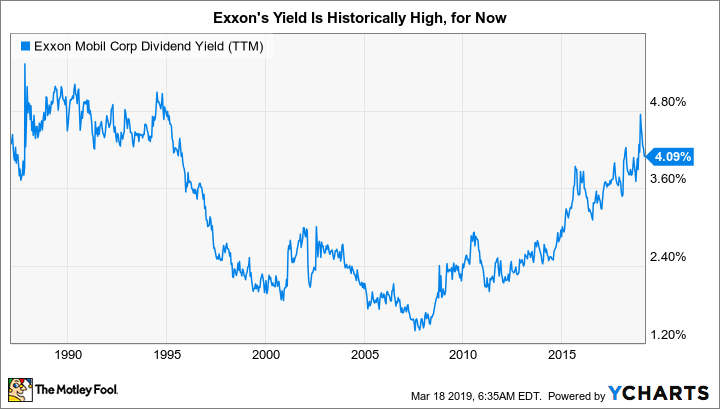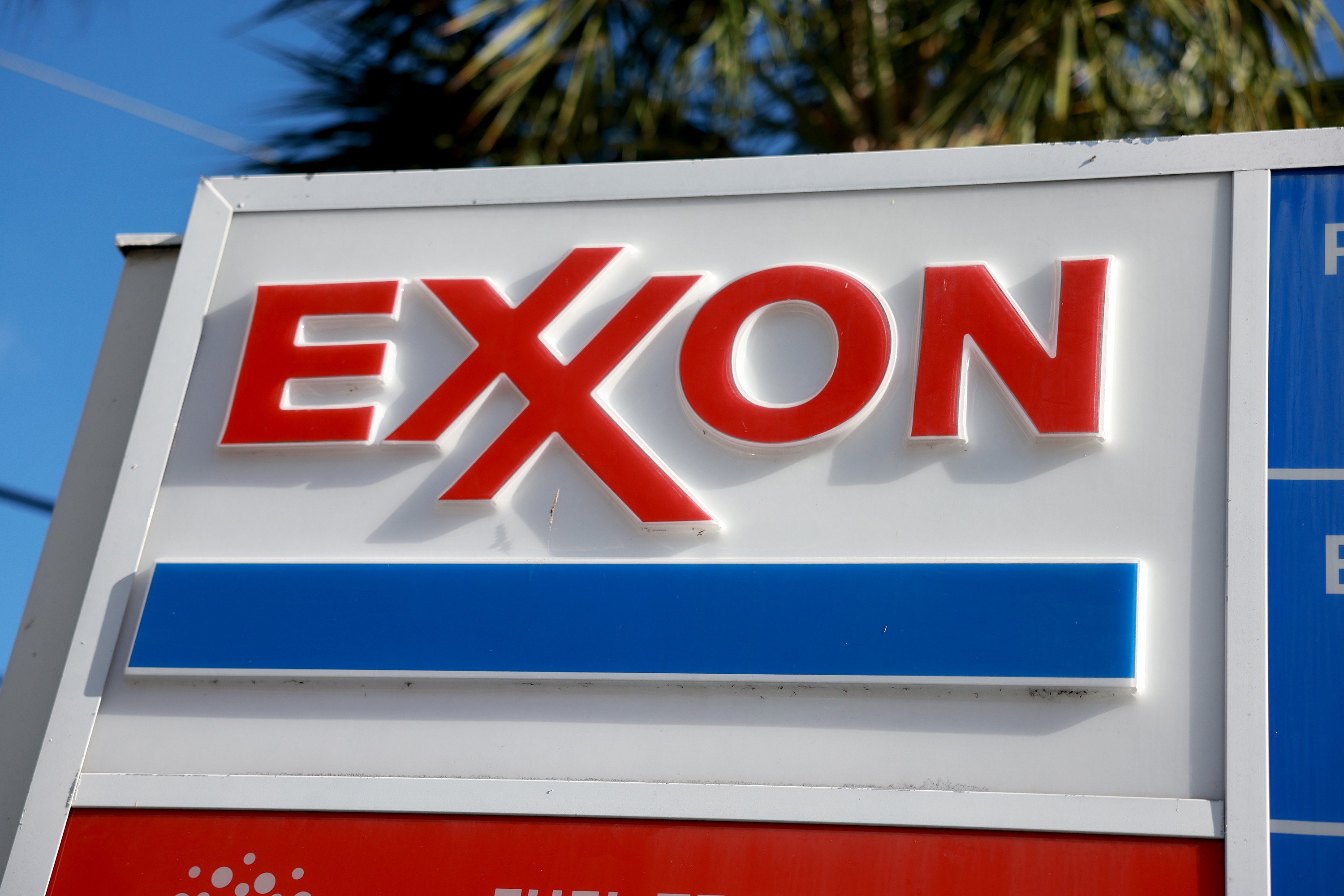Despite a strong start to 2019, shares of ExxonMobil Corporation (XOM 0.54%) are still down around 20% from their 2015 highs. The company's ongoing troubles with production growth are a big part of the negative investor sentiment here. However, once you look past the headline numbers, there's a silver lining starting to appear on Exxon's production cloud. Here's the deeper dive you need to understand the turn that's starting to take shape.
It's been a rough stretch
Exxon's production in 2015 was roughly 4.097 million barrels of oil per day. It fell to 4.053 million barrels in 2016, and then to 3.985 million barrels in 2017. Last year it was just 3.833 million barrels of oil per day on average. The year to year drops weren't huge, all in the low single digits. However, over the span of a just a few years, Exxon's production declines tallied up to over 6%.

Image source: Getty Images
Investors are often willing to forgive year to year variability in production, but the declines at Exxon have begun to look like a trend -- and a not very auspicious one. That's doubly true when you consider that many of the integrated energy giant's peers have been able to increase production, often notably, over the same time span.
However, Exxon isn't ignorant of the production issue. In early 2018 it announced a renewed focus on turning this metric around, built on three main targets. The first two were offshore oil drilling in places like Guyana and Brazil and natural gas drilling in locations such as Mozambique. The trouble is that these projects are all long-term in nature, offering little opportunity to support a near-term upturn in production. But the third area of focus, onshore U.S. drilling, is very different.
Check out the latest earnings call transcript for ExxonMobil.
Turning a corner
Onshore U.S. drilling shows results relatively quickly, which helps explain why Exxon decided to push hard into the U.S. onshore market, buying a massive amount of oil land in 2017. In 2018 it ramped up its drilling effort on the newly acquired property.
|
Exxon Production in 2018 by Quarter | |||
|---|---|---|---|
|
Q1 |
Q2 |
Q3 |
Q4 |
|
3.889 million barrels |
3.647 million barrels |
3.786 million barrels | 4.010 million barrels |
Data source: ExxonMobil Corporation
Although the top line production number fell year over year in 2018, there was a directional change in the second half. Exxon's average production increased between the second and third quarters, and again between the third and fourth quarters. Although the uptick wasn't enough to change the headline number for the year, it looks like the energy giant's production has hit an inflection point. That turn was driven by the company's U.S. onshore efforts.
And Exxon isn't done yet. It plans to continue pushing hard in the U.S. onshore market as it seeks to increase its scale and, in turn, profitability. The goal is to go from 48 rigs to 55 by the end of 2019. That's a huge number, especially noting that some smaller drillers are actually pulling back on the number of rigs they operate to shore up their profitability. Exxon, meanwhile, estimates that, at present, it can produce 10% returns even if oil falls to $35 a barrel.
XOM Dividend Yield (TTM) data by YCharts
That said, the oil giant believes there's still room for improvement. As it gains scale, it believes that it can push production costs in the U.S. onshore business down into the $15 per barrel range. That's a cost that would rival the giant oil fields in the Middle East according to industry watchers, placing Exxon's U.S. production among the cheapest sources of oil in the world. And all of this means continued production growth from Exxon's onshore U.S. assets. That, in turn, will bridge the gap between today and when the company's longer-term investments in the offshore and natural gas spaces start producing results.
Time to rethink Exxon
If you are looking at the oil space, don't dismiss Exxon because of its falling production numbers. There's a sea change taking shape, and once investors start to realize the improvement Wall Street's view of this industry giant will likely change for the better. And as it's still offering a historically high yield of around 4%, Exxon investors would be wise to dig a little deeper into the production story -- before investors catch on to the underlying improvements being made.







